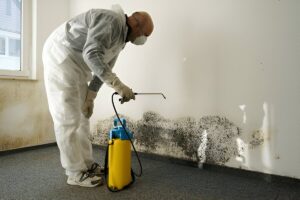In today’s health-conscious world, the importance of maintaining a clean and safe environment cannot be overstated. Anti-bacterial cleaning has emerged as a crucial practice for households and businesses alike, serving as an effective barrier against harmful germs and mold. This article provides an in-depth exploration of anti-bacterial cleaning, its benefits, techniques, and the science behind its effectiveness.
Understanding Anti-Bacterial Cleaning
Anti-bacterial cleaning refers to the use of specific cleaning agents designed to eliminate bacteria, fungi, and viruses from surfaces. Unlike regular cleaning products, which primarily remove dirt and grime, anti-bacterial cleaners actively kill or inhibit the growth of microorganisms.
The Science Behind Anti-Bacterial Agents
The effectiveness of anti-bacterial cleaning lies in its active ingredients. Common agents include:
- Chlorine Compounds: Known for their disinfecting properties, they are effective against a wide range of pathogens.
- Alcohols: Ethanol and isopropyl alcohol are popular for their ability to kill bacteria quickly upon contact.
- Quaternary Ammonium Compounds (Quats): These are widely used in commercial cleaning products for their long-lasting effects.
How Anti-Bacterial Cleaning Works
The process of anti-bacterial cleaning involves several steps:
- Preparation: Remove loose dirt and debris from surfaces.
- Application: Apply the anti-bacterial cleaner according to the manufacturer’s instructions.
- Contact Time: Allow the product to sit on the surface for the recommended time to maximize effectiveness.
- Rinsing (if necessary): Some products may require rinsing after application.
The Importance of Anti-Bacterial Cleaning
Maintaining a clean environment is essential for several reasons. Anti-bacterial cleaning plays a significant role in:
Preventing Illness
Regularly disinfecting surfaces can significantly reduce the risk of infections. High-touch areas like doorknobs, light switches, and countertops are breeding grounds for germs.
Reducing Allergens
Mold and mildew thrive in damp environments, leading to respiratory issues and allergies. Anti-bacterial cleaning helps eliminate these allergens, improving indoor air quality.
Enhancing Safety
In commercial settings, such as restaurants and healthcare facilities, anti-bacterial cleaning is vital for ensuring the safety of customers and employees. It helps maintain compliance with health regulations and standards.
Best Practices for Anti-Bacterial Cleaning
To achieve optimal results, follow these best practices when engaging in anti-bacterial cleaning:
Choose the Right Product
Selecting the appropriate cleaning agent is crucial. Consider the surface being cleaned and the type of bacteria or mold you are targeting.
Follow Manufacturer Instructions
Always adhere to the guidelines provided by the manufacturer. This includes dilution ratios, contact times, and any necessary safety precautions.
Use Proper Techniques
- Spraying: For large surfaces, spray the cleaner evenly and allow it to sit.
- Wiping: Use clean cloths or disposable wipes to remove dirt and disinfect surfaces.
- Scrubbing: For stubborn stains or mold, scrubbing may be necessary to ensure thorough cleaning.
Common Areas to Focus On
Certain areas of your home or business require more attention when it comes to anti-bacterial cleaning. These include:
Kitchens
Kitchens are hotspots for bacteria due to food preparation. Regular cleaning of countertops, cutting boards, and sinks is essential.
Bathrooms
Bathrooms harbor germs and mold due to moisture. Focus on cleaning toilets, sinks, and shower areas regularly.
High-Touch Surfaces
Items like remote controls, phones, and light switches should be disinfected frequently, as they are touched often and can harbor germs.
The Role of Anti-Bacterial Products in Mold Prevention
Mold can pose serious health risks, particularly for individuals with allergies or respiratory issues. Anti-bacterial cleaning products can help mitigate mold growth through:
Inhibiting Growth
Many anti-bacterial cleaners contain ingredients that not only kill existing mold but also prevent new spores from developing.
Maintaining Dryness
By regularly cleaning and disinfecting damp areas, you can reduce moisture levels that contribute to mold growth.
Eco-Friendly Alternatives
While traditional anti-bacterial cleaners are effective, eco-friendly options are gaining popularity. These alternatives often use natural ingredients to achieve similar results without harsh chemicals.
Common Eco-Friendly Ingredients
- Vinegar: Known for its natural disinfectant properties.
- Baking Soda: Effective for scrubbing surfaces and neutralizing odors.
- Essential Oils: Oils like tea tree and lavender have natural anti-bacterial properties.
Benefits of Eco-Friendly Cleaning
- Reduced Chemical Exposure: Safer for families and pets.
- Environmental Impact: Less harmful to the planet compared to conventional cleaners.
Tips for Effective Anti-Bacterial Cleaning
To maximize the effectiveness of your cleaning routine, consider the following tips:
Create a Cleaning Schedule
Establish a regular cleaning schedule to ensure all areas are addressed consistently.
Use the Right Tools
Invest in quality cleaning tools, such as microfiber cloths and durable scrub brushes, to enhance your cleaning efforts.
Educate Others
If you share your space with others, educate them on the importance of anti-bacterial cleaning and how they can contribute.
The Future of Anti-Bacterial Cleaning
As technology advances, the future of anti-bacterial cleaning looks promising. Innovations in cleaning products and techniques are expected to enhance effectiveness and convenience.
Smart Cleaning Solutions
Smart cleaning devices, such as robotic vacuums that include UV sterilization, are becoming more common. These tools can help maintain cleanliness with minimal effort.
Ongoing Research
Research continues to explore new anti-bacterial agents and methods, ensuring that cleaning practices evolve to meet emerging health challenges.
Conclusion
In a world where health and hygiene are paramount, anti-bacterial cleaning serves as a vital measure in combating germs and mold. By understanding its importance, employing effective techniques, and considering eco-friendly alternatives, individuals and businesses can create safer and healthier environments. Embrace the power of anti-bacterial cleaning as your shield against harmful microorganisms and mold, ensuring a cleaner, healthier future for all.
For more information about Anti-Bacterial Cleaning in Plainfield New Jersey please contact:
Business Name: Green Guard Mold Remediation Plainfield
Address: 321 E 3rd St, Plainfield, NJ 07060, United States
Phone: 888-793-7963



